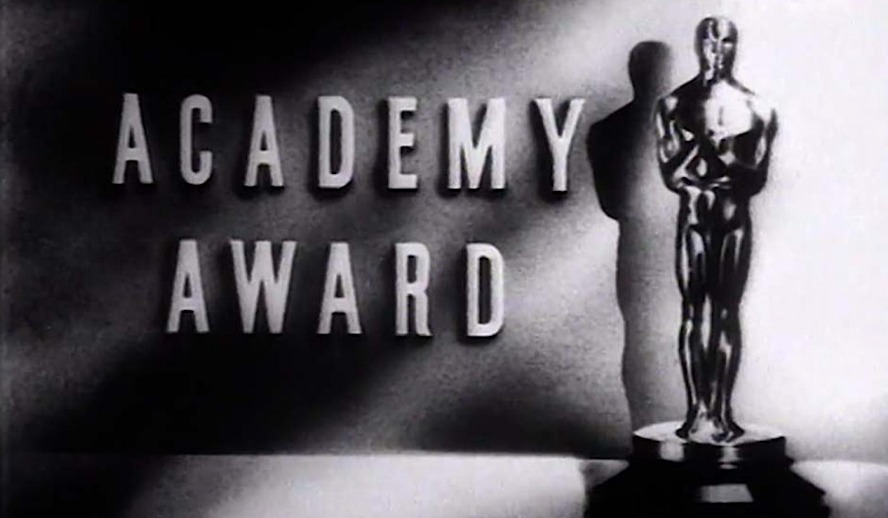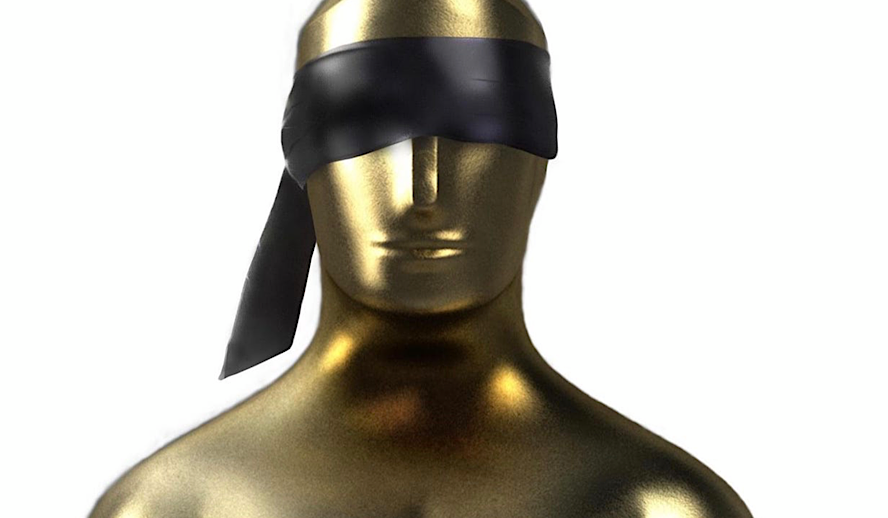Table of Contents

Photo: Oscars New Rules
The Academy of Motion Picture Arts and Sciences, which oversees the Oscars, was founded on May 11th, 1927. Seven years shy of their 100th birthday, they announced new diversity and inclusion rules that will begin in 2022 and take full effect in 2024, the 96th Oscar ceremony. For films to meet the standards, one of the lead actors, or a significant supporting actor, must be from an underrepresented racial or ethnic group. An additional way to meet this standard is if thirty percent of the actors in secondary or minor roles fit the following: women, LGBTQ+, underrepresented racial or ethnic group, or people with cognitive or physical disabilities. These new rules have received mostly positive feedback, but many critics think these new rules won’t reward the worthiest films, but rather favor the ones that fit a social agenda.
Fortunately, for the Academy and those from underrepresented groups, examining the history of Oscar winners and the lack of acknowledgment of those from underrepresented groups socially justifies the Academy’s actions. Simply researching the list of Best Picture winners throughout the Academy’s history will show cis-white heterosexual male lead characters have always dominated Hollywood. Unfortunately, America’s social judgment flaws have allowed many great movies made by and about underrepresented groups to slip into the cracks of history. This brings up an interesting question; Which films and filmmakers from underrepresented groups would have qualified for an Oscar if the Academy’s rules were put in place fifty years ago?
Related article: Will the Diversity in Victory of Last Year’s Oscars 2019 – 91st Academy Award Winners Ever Be Repeated?
Related article: Oscars Diversity Guarantee: What the Academy Awards’ New Rules Mean?
For decades after the first Oscar ceremony in 1929, Best Picture winners featured mostly films from white male directors with white casts and white male leads with white female love interests. During the foundational years in the 1920s, with segregation and racism towards Black Americans rampant, Black filmmakers made movies outside the Hollywood mainstream, and mostly for Black American audiences. Refer to Paul Miller’s project with Kino Lorber in which they restored over 500 films made in the early 20th century by Black Americans outside the Hollywood mainstream. Spencer Williams’ The Blood of Jesus (1941) one of the most successful race movies ever made, was added to the national film registry at the library of congress in 1991, which surely would have at least received an Oscar nomination had the Academy put these rules in place in 1941.
Williams would have been going against classics such as Citizen Kane and The Maltese Falcon. Then, of course, there’s Oscar Micheaux, a self-taught filmmaker who is often referred to as the foundation of Black cinema and was never acknowledged by mainstream Hollywood. He was independent and his films dealt with topics related to Black experiences from a Black perspective and were often a direct response to D.W. Griffith’s Birth of a Nation (1915), which glorifies the Ku Klux Klan and portrays Black Americans offensively. His efforts along with his quality results put him at the most qualified filmmakers during his time to be nominated for an Oscar but never did.
Related article: Hollywood Insider’s CEO Pritan Ambroase: “The Importance of Venice Film Festival as the Protector of Cinema”
Related article: Live Updates: List of Successes From Black Lives Matter Protests!
The Artists Left Out of Hollywood’s Spotlight
Other than being cast in stereotypical, offensive roles, LatinX Americans found great difficulty penetrating the Hollywood bubble for most of the 20th century. Latin American actor Anthony Quinn put Latino Americans on Oscar ballots for the first time when he won Best Supporting Actor in 1952 and 1956 for Viva Zapata! and Lust for Life. Latina American actress Katy Jarudo was nominated for Best Supporting Actress in 1954 as well. There would undoubtedly have been many LatinX Oscar contenders if the Academy originated with these soon-to-be rules, given that Mexico and Mexican Americans were consistently releasing incredible films between 1936 and the 1950s. It wasn’t until the 21st century that Latino American filmmakers started getting nominated for Best Director and Best Picture Oscars, with Alejandro González Iñárritu being nominated for multiple Oscars in 2006, and later being nominated for more, and even winning many in the 2010s. However, with these new rules put in place, we’re guaranteed to see a lot more LatinX cinema, which has been thriving and growing in the undercurrent of American society since the 1930s.
Since the 1940s, only 5% of all major films have been directed by women. On the 100 top-grossing movies, only 33.1% of all speaking characters were women. Even then, the roles available for women were for, usually white, secondary love interests, or femme fatale to the white male lead. Actress Hattie McDaniel, though often stereotyped, became a trailblazer by being not only a woman, but a woman of color, and impressively winning an Oscar for Best Supporting Actress for her role in Gone with the Wind (1939). She was not allowed to attend the premiere of the film in Atlanta, Georgia, due to racial laws. It wasn’t for decades until women in lead and directorial roles would be acknowledged by the Academy. Dorothy Arzner was the first known female director and supposedly created the first boom mic. Her films Fashions for Women (1927), Wild Party (1929), and Dance Girl Dance (1940), which includes a pioneering and Oscar-worthy monologue by Maureen O’ Hara that addresses the male gaze, were triumphant and game-changing for women in Hollywood.
Subscribe to Hollywood Insider’s YouTube Channel, by clicking here.
Arzner never got Oscar recognition, however, the Academy did show a lot of appreciation for Edith Head (Sunset Boulevard, To Catch a Thief, White Christmas, All About Eve) a Hitchcock regular, who was one of the best costume designers in Hollywood’s history, and won eight Academy awards throughout her career, in addition, to providing hope for women pursuing careers in male-dominated Hollywood at the time. There’s also the 1978 Honorary Oscar Award winner Margaret Booth, who almost broke that barrier before Edith Head when she was nominated for an Oscar in 1936 for her editorial work on Mutiny on the Bounty (1935) but lost to Ralph Dawson. Maya Deren, who’s often referred to as the mother of underground film, was a multi-talented filmmaker who made many incredible, certainly Oscar-worthy films at the time but went against the Hollywood mainstream and was never given the acknowledgment she deserved.
The trend of the white male leads dominating the Best Picture winners came to a halt when box office hit All About Eve (1950), directed and written by Joseph L. Mankiewicz, with Bette Davis and Anne Baxter in the lead roles, won in 1951. As few and far in between as that happened though, many great performances were overlooked. Perhaps if these new rules were put in place in 1974, Blaxploitation hit Foxy Brown, starring Pam Grier, may have been on the Best Picture ballot, which would have been a huge move for Black American cinema at the time, along with women of color. Another category that remained unfulfilled by a woman until the 21st century, is the Best Director category. It wasn’t until 2007, just thirteen years ago, that Kathryn Bigelow became the first woman to win an Oscar for Best Director. Perhaps if Dorothy Arzner had been recognized for her cinematic accomplishments, this wouldn’t have been the case. These examples reinforce the importance of the Academy’s new rules; to cover all cracks and implement a full proof system that prevents this from continuing.
Related article: The Power of Positivity: Ikorodu Bois + Chris Hemsworth + Russo Brothers + Sam Hargrave
Limited Time Offer – FREE Subscription to Hollywood Insider – Click here to read more on Hollywood Insider’s vision, values and mission statement here – Media has the responsibility to better our world – Hollywood Insider fully focuses on substance and meaningful entertainment, against gossip and scandal, by combining entertainment, education, and philanthropy.
Not Just Underrepresented, But Completely Ignored
LGBTQ+ films were extremely rare in the early days of cinema. If apparent at all, it was a very subtle and subtextual element of a story, more than often used as a source of humor or moral allegory. Cecil B. Demille’s film, Manslaughter (1922) was the first film to show a same-sex kiss. Morocco (1930) did something similar and was even nominated for several Oscar categories, but the same-sex kiss was also criticized for being scandalous, and no one from that film took home any Oscars that night. The word “homosexual,” wasn’t even spoken on screen until the release of the British film Victim (1961) which was rejected for a seal of approval from the infamous Motion Picture Production Code, also known as the Hays Code.
Filmmaker Ed Wood famously dressed in drag in Glen or Glenda (1953) and was known to be, at the time called a “cross-dresser” in his personal life, which highlights the smallest extent to a transgender experience as cinema dared to go during the early days, and that was an independent film, not anything a Hollywood producer at the time would touch. Homosexuality was decriminalized in some regions in the U.S. in 1962 and wasn’t legal nationwide until 2003 (Lawrence v. Texas (2003)). Because of this, LGBTQ+ representation in cinema didn’t start making significant progress until fifty years ago with William Freidkin’s film The Boys in the Band (1970). A milestone for Queer Cinema, based on the 1968 Broadway play of the same name, put the gears in motion for LGBTQ+ representation. Even though the film was critically and commercially received, it didn’t receive any Oscar attention. Perhaps this wouldn’t have been the case had the Academy’s new rules been intact.
Related article: ‘Dune’: Reactions from Timothée Chalamet, Denis Villeneuve, Zendaya, Jason Momoa & Co-Stars
Some of the Best Films and Filmmakers from Underrepresented Groups
All About Eve, of course, was significant for women occupying the lead roles of a Best Picture winner. The Apartment (1960) had Shirley MacLaine in the lead role and was nominated and won several Oscars, including Best Picture. To see some of the best female lead films in the early days of Hollywood, Dorothy Arzner’s Christopher Strong (1933), The Bride Wore Red (1937) and Merrily We go to Hell (1932) are certainly worth checking out. Unfortunately, the lack of women-led films is still a huge problem in Hollywood. Only five women in the Academy’s ninety-three-year existence have been nominated for Best Director: Lina Wertmuller for Seven Beauties (1975), Jane Champion for The Piano (1993), Sofia Coppola for Lost in Translation (2003), Kathryn Bigelow for The Hurt Locker (2007) and Greta Gerwig for Lady Bird (2017). In the last few years, Oscar categories have shown, more and more women are getting opportunities to direct films, and that trend will surely continue once the new rules take effect.
For early Black American cinema, Oscar Micheaux made many great films, such as Within Our Gates (1920) The Exile (1931) and Swing (1938) to name a few. In the Heat of the Night (1967) starred African American actor, Sidney Poitier, in the lead role, and won Best Picture in 1967, yet Poitier didn’t get any Oscar acknowledgment. Spencer William’s The Blood of Jesus (1941) is a very moving film. Gordon Parks Shaft (1971) transcended not only Black America cinema, but the way movies were made as a whole. Best Picture winners didn’t see much representation of people of color in the 20th century but began to pick up in the 21st century with Crash (2005), a film with a theme of racism. Slumdog Millionaire (2008) introduced an Indian lead in an Oscar contender, which hadn’t happened before. Then in the last decade, here we have a strong trailblazer that propelled the momentum of this socially changing gear; 12 Years a Slave (2013). With social activism and awareness of racial issues spreading faster than it ever has before, people of color are finally starting to thrive in Hollywood. With hits like Crazy Rich Asians (2018), Pain and Glory (2019), and Get Out (2017), it’s clear the Academy’s rules should have been put in place long ago.
Related article: It is Time to Re-Define “Oscar-Worthy” as Oscars Needs To Stop Awarding Popularity & Box-Office Success and Focus on Talent and Prestige
LGBTQ+ themes in the history of cinema are extremely rare before the late 1960s. Films such as The Children’s Hour (1961), Desert Hearts (1985), Dog Day Afternoon (1975), and Sunday Bloody Sunday (1971) included gay themes, but it was never at the forefront of a film. An LGBTQ+ film featuring prominent gay themes in a positive light didn’t gain critical or commercial attention until 2006, with Ang Lee’s Brokeback Mountain (2007). Rose Troche’s Go Fish (1994) is a fantastic independent film that explores lesbian culture and features a mostly LGBTQ+ cast and crew. Then, in 2016, here comes this knight in shining armor, the history-making first LGBTQ+ movie to win Best Picture, Moonlight (2016). This was LGBTQ+ and people of color’s moment, not just in cinema, but in society as a whole. And alas, history provided the justice and credit that deserved to be given, and Moonlight took home the best picture Oscar that night.
Related article: Remembering Heath Ledger – A Tribute to the Legendary Superstar
Related article: A Tribute To Freddie Mercury – A Hero That Dared To Be Himself
Oscars New Rules – The Future for Underrepresented Groups in Cinema
The last few years have seen a major improvement in the representation of minority groups. For instance, in 2018 the Best Picture contenders were: Ryan Coogler’s Black Panther, which had a mostly Black American cast and crew. Spike Lee’s BlackKKKlansman, a Black American writer/director/producer in addition to the lead actor. Bohemian Rhapsody is based on Freddie Mercury, the Indian Parsi rock legend who was also gay. The Favourite has a largely female cast and features lesbian leads and romances. Green Book features a Black co-lead actor who is also a gay character. Roma is entirely in Spanish. Then the last two are white male-dominated; A Star is Born, and Vice. The 2019 Oscar contenders also showed tremendous social promise. Bong Joon Ho’s Parasite made history, along with Taika Waititi’s JoJo Rabbit, which broke records for indigenous and aboriginal filmmakers, and Greta Gerwig’s Little Women, with a majority female cast and crew. There’s no doubt the United States is at a turning point in history. Socially, there’s a lot more to be done, a far greater reach, but with the Academy’s new rules, hope for anyone from any background is finally on the horizon.
Click here to read Hollywood Insider’s CEO Pritan Ambroase’s love letter to Black Lives Matter, in which he tackles more than just police reform, press freedom and more – click here.
An excerpt from the love letter: Hollywood Insider’s CEO/editor-in-chief Pritan Ambroase affirms, “Hollywood Insider fully supports the much-needed Black Lives Matter movement. We are actively, physically and digitally a part of this global movement. We will continue reporting on this major issue of police brutality and legal murders of Black people to hold the system accountable. We will continue reporting on this major issue with kindness and respect to all Black people, as each and every one of them are seen and heard. Just a reminder, that the Black Lives Matter movement is about more than just police brutality and extends into banking, housing, education, medical, infrastructure, etc. We have the space and time for all your stories. We believe in peaceful/non-violent protests and I would like to request the rest of media to focus on 95% of the protests that are peaceful and working effectively with positive changes happening daily. Media has a responsibility to better the world and Hollywood Insider will continue to do so.”
Vote with a conscience – Register to Vote – Your vote saves lives and ends systemic racism
Ways to support Black Lives Matter Movement to end systemic racism
More Interesting Stories From Hollywood Insider
– Want GUARANTEED SUCCESS? Remove these ten words from your vocabulary| Transform your life INSTANTLY
– Compilation: All James Bond 007 Opening Sequences From 1962 Sean Connery to Daniel Craig
– Do you know the hidden messages in ‘Call Me By Your Name’? Find out behind the scenes facts in the full commentary and In-depth analysis of the cinematic masterpiece
– A Tribute To The Academy Awards: All Best Actor/Actress Speeches From The Beginning Of Oscars 1929-2019 | From Rami Malek, Leonardo DiCaprio To Denzel Washington, Halle Berry & Beyond | From Olivia Colman, Meryl Streep To Bette Davis & Beyond
– In the 32nd Year Of His Career, Keanu Reeves’ Face Continues To Reign After Launching Movies Earning Over $4.3 Billion In Total – “John Wick”, “Toy Story 4”, “Matrix”, And Many More
Oscars New Rules, Oscars New Rules, Oscars New Rules, Oscars New Rules, Oscars New Rules, Oscars New Rules, Oscars New Rules, Oscars New Rules, Oscars New Rules, Oscars New Rules, Oscars New Rules, Oscars New Rules, Oscars New Rules, Oscars New Rules, Oscars New Rules, Oscars New Rules, Oscars New Rules, Oscars New Rules, Oscars New Rules, Oscars New Rules, Oscars New Rules, Oscars New Rules, Oscars New Rules, Oscars New Rules

Armando Brigham is a writer, comedian, and actor who blends his adoration of film & TV with his passion for writing. Armando has a keen interest in the powerful impact art and entertainment can make. He sets out to write features and reviews full of honesty, encouragement, and vigor, which is why he’s writing for the Hollywood Insider, a place that champions facts, quality writing, and building art up.








